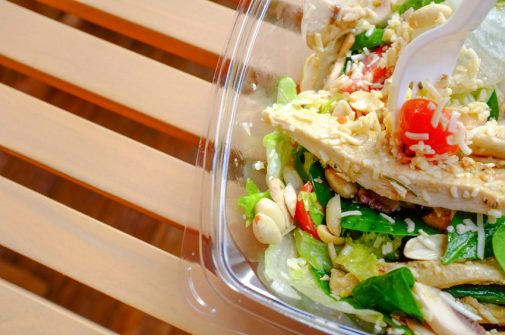Why an elimination diet might be right for you

Do you feel better or worse after eating a meal? If you experience bloating, a skin rash and even brain fog after eating, an elimination diet may help identify trigger foods that could be causing your side effects.
An elimination diet is a short-term eating plan that helps identify potential food allergies and intolerances that cause a variety of health issues such as bloating, joint pain, headaches, fatigue and even skin rashes, such as eczema.
Elimination diets typically test for the most common food allergens and intolerances such as wheat, dairy, eggs, soy, fish, shellfish, tree nuts (almonds, walnuts and pistachios) and peanuts. These trigger foods are eliminated from the diet for a specific amount of time and are then slowly reintroduced one at a time while the patient monitors their symptoms for possible reactions.
“An elimination diet could be a good experiment for someone who experiences a lot of digestive issues. However, it should not be an alternative to seeing a gastroenterologist,” says Elizabeth Zawila, a registered dietician at Advocate Good Samaritan Hospital’s Health and Wellness Center in Downers Grove, Ill.
Zawila stresses that elimination diets do not come in a one-size-fits-all approach. For example, people with inflammatory conditions such as arthritis or psoriasis may eliminate refined sugar, processed foods, gluten and dairy, while a different set of foods may be eliminated for someone suffering from irritable bowel syndrome (IBS), migraines or gastroesophageal reflux disease (GERD).
“The recommendations for eliminating and reintroducing foods can vary quite a lot from person to person depending on their severity of symptoms and if they suffer from IBS, Crohn’s or ulcerative colitis,” says Zawila.
The first step in determining if certain foods are having a negative impact on your health is to keep a food journal for two to four weeks. Record everything from food to beverages in addition to any symptoms that develop. Zawila says that symptoms can show up immediately through stomach cramps, diarrhea or hives, while others can turn up later such as a headache, brain fog or fatigue.
Next, prepare your kitchen for the days ahead. Plan out meals, go grocery shopping and take a few extra minutes a day to prepare meals.
Tracking is essential as you begin the elimination diet. Write down what you eat and your symptoms. How do you feel? Do you have more energy? Did you sleep through the night? Does your skin look better? Are you less bloated?
The reintroduction phase comes next, as you start to add one trigger food at a time. Again, it is important to track the amount of food along with your symptoms.
“Overall, an elimination diet provides a good lesson in label reading. It also encourages people to prepare minimally processed, home-cooked meals, which ends up being an improvement for most people’s nutrition,” says Zawila.
Related Posts
Comments
One Comment
About the Author
Johnna Kelly, healthe news contributor, is a manager of public affairs and marketing at Advocate Christ Medical Center in Oak Lawn. She is a former newspaper reporter and spent nearly 10 years as a public relations professional working for state and county government. During her time as a communications staffer for the Illinois General Assembly, she was integral in drafting and passing legislation creating Andrea's Law, the nation's first murderer registry. In her spare time, she volunteers at a local homeless shelter, enjoys traveling, photography and watching the Chicago Bulls.


















The Whole 30 Program is a GREAT elimination diet. The books “It Starts With Food” and “Whole30” do a great job of walking you through the process!